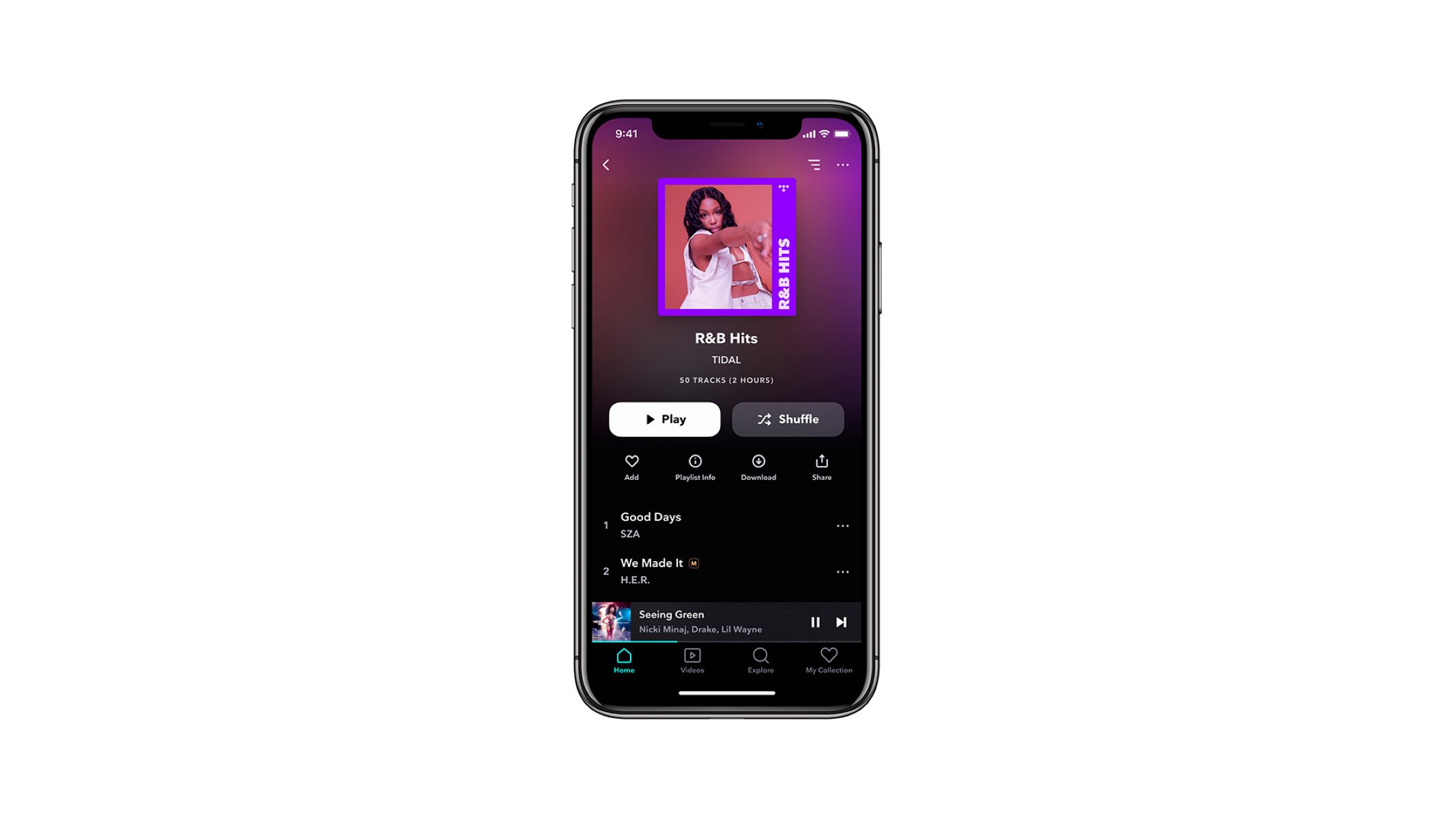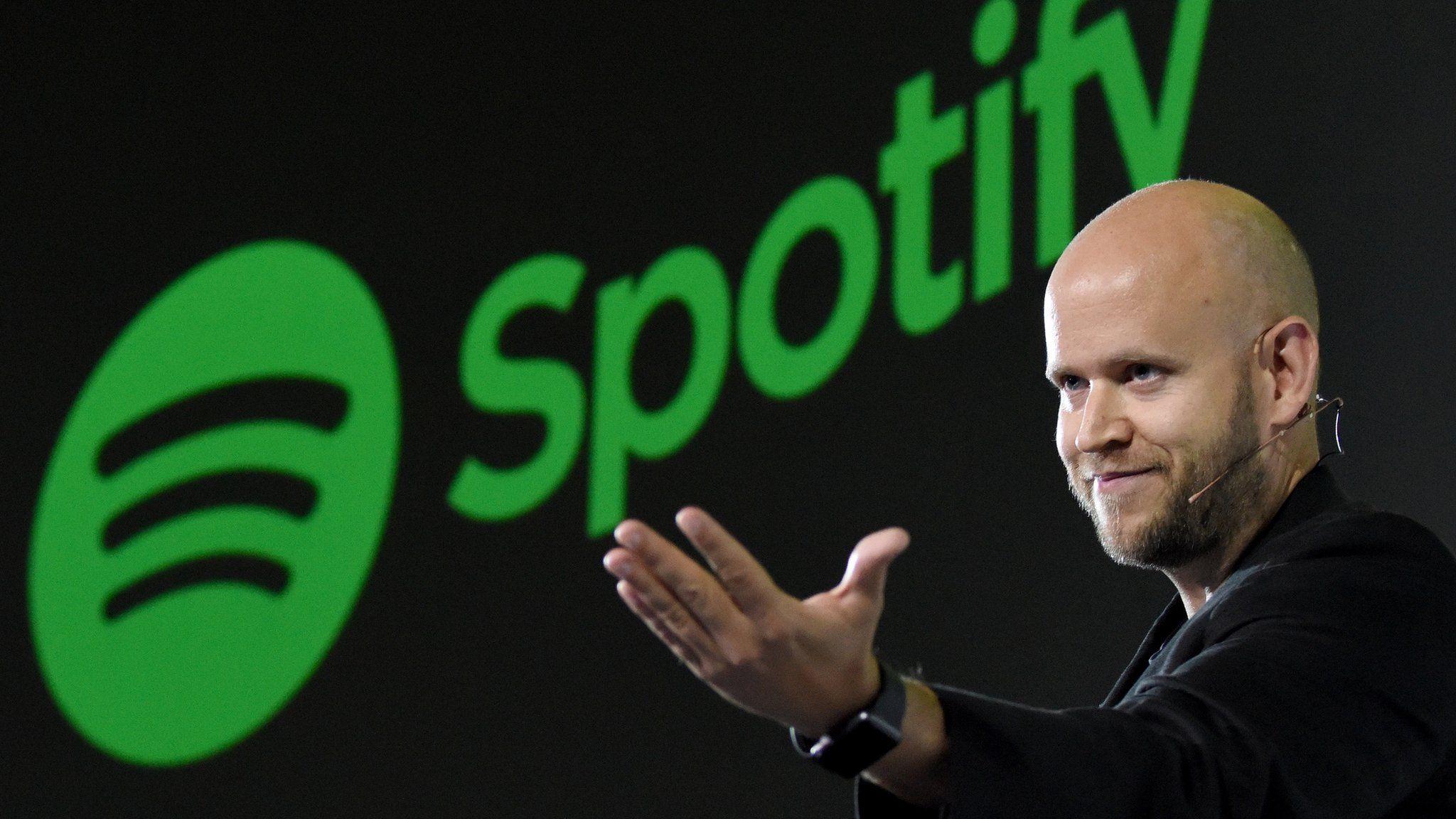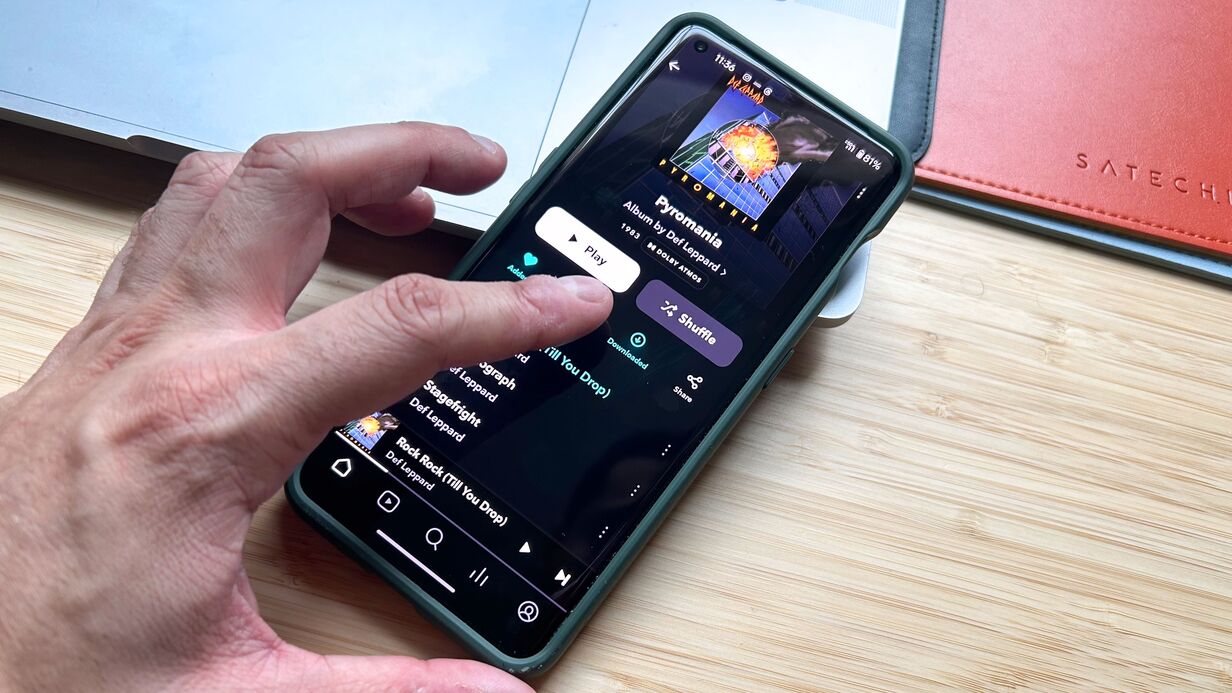Home>Devices & Equipment>Streaming>How Do Music Streaming Services Work


Streaming
How Do Music Streaming Services Work
Published: March 7, 2024
Discover how music streaming services work and the technology behind them. Learn about the benefits of streaming and how it has revolutionized the music industry.
(Many of the links in this article redirect to a specific reviewed product. Your purchase of these products through affiliate links helps to generate commission for AudioLover.com, at no extra cost. Learn more)
Table of Contents
Introduction
In today's digital age, music has become more accessible than ever before, thanks to the rise of music streaming services. These platforms have revolutionized the way people consume music, offering a vast library of songs that can be accessed anytime, anywhere. Whether you're a music enthusiast, a casual listener, or an artist looking to share your work, music streaming services have transformed the landscape of the music industry.
As technology continues to evolve, the way we listen to music has undergone a significant shift. Gone are the days of purchasing physical albums or downloading individual tracks. Instead, music streaming services have made it possible to enjoy a virtually endless collection of songs through the internet. With just a few taps on a smartphone or clicks on a computer, users can explore a diverse range of musical genres and discover new artists from around the globe.
The convenience and flexibility offered by music streaming services have made them immensely popular among music lovers. Whether you're commuting to work, working out at the gym, or relaxing at home, these platforms provide a seamless and immersive listening experience. Furthermore, the ability to create personalized playlists and explore curated recommendations tailored to individual preferences has redefined the way people engage with music.
As we delve deeper into the world of music streaming services, it's essential to understand how these platforms operate, the various types available, and the advantages and disadvantages they bring to the table. By gaining insight into the inner workings of music streaming services, we can better appreciate the impact they have had on the music industry and the way we engage with music on a daily basis.
What is Music Streaming?
Music streaming refers to the process of playing audio tracks over the internet without the need for downloading the files to a device. This innovative method allows users to access a vast library of songs, albums, and playlists through dedicated platforms or applications. Unlike traditional music consumption methods, such as purchasing physical albums or downloading individual tracks, music streaming offers instant access to a diverse range of musical content.
At its core, music streaming leverages the power of the internet to deliver audio content in real-time, enabling users to listen to their favorite songs on-demand. This seamless and on-the-go accessibility has transformed the way people engage with music, providing unparalleled convenience and flexibility. Whether it's exploring new releases, revisiting classic albums, or discovering emerging artists, music streaming platforms cater to a wide spectrum of musical preferences.
The technology behind music streaming involves the use of specialized servers that host extensive music libraries, which are then accessed by users through streaming applications. When a user selects a song to play, the streaming service retrieves the audio data from its servers and delivers it to the user's device in real-time. This process eliminates the need for large file downloads, making it possible to enjoy music without consuming significant storage space on the user's device.
Furthermore, music streaming services often employ advanced algorithms to personalize the listening experience for each user. By analyzing listening habits, user preferences, and other data points, these platforms offer tailored recommendations, curated playlists, and personalized radio stations. This level of customization enhances the overall music discovery process, allowing users to explore new artists and genres based on their individual tastes.
In essence, music streaming has redefined the way people access, discover, and enjoy music. With its emphasis on instant access, diverse content, and personalized recommendations, music streaming has become an integral part of modern music consumption, shaping the way we interact with our favorite songs and artists.
How Music Streaming Services Work
Music streaming services operate through a sophisticated network of servers, databases, and digital rights management systems to deliver a seamless and immersive listening experience to users. The underlying technology employed by these platforms enables users to access a vast catalog of songs, albums, and playlists with just a few taps or clicks. Understanding the inner workings of music streaming services sheds light on the intricate processes that power these platforms and facilitate the on-demand delivery of music content.
When a user accesses a music streaming service, the platform's servers act as the central hub for storing and managing an extensive library of audio content. These servers are equipped to handle a high volume of concurrent user requests, ensuring that users can access their favorite songs without delays or interruptions. The music files are stored in a compressed format to optimize streaming efficiency, allowing for swift transmission of audio data over the internet.
Upon selecting a song to play, the music streaming service leverages advanced streaming protocols to retrieve the corresponding audio data from its servers in real-time. This process involves the seamless transmission of audio packets over the internet, enabling the user's device to receive and play the music without the need for extensive buffering or waiting periods. The use of streaming protocols ensures a smooth and uninterrupted listening experience, even when accessing high-quality audio content.
In addition to delivering audio data to the user's device, music streaming services employ digital rights management (DRM) systems to protect copyrighted content and ensure that artists and rights holders receive fair compensation for their work. DRM technologies play a crucial role in safeguarding intellectual property rights, preventing unauthorized distribution of music, and enforcing licensing agreements. By implementing robust DRM measures, music streaming services uphold the integrity of the music industry and support the livelihood of artists and creators.
Furthermore, the user experience on music streaming platforms is enhanced by the integration of personalized recommendation algorithms. These algorithms analyze user behavior, listening history, and preferences to generate tailored music recommendations, curated playlists, and personalized radio stations. By leveraging machine learning and data analytics, music streaming services offer a dynamic and engaging music discovery experience, allowing users to explore new artists and genres based on their individual tastes.
Overall, the intricate workings of music streaming services encompass a blend of cutting-edge technology, digital infrastructure, and user-centric features. By seamlessly delivering audio content, upholding copyright protection, and offering personalized recommendations, these platforms have redefined the way people engage with music, setting a new standard for modern music consumption.
Types of Music Streaming Services
Music streaming services come in various forms, each offering unique features and catering to diverse user preferences. Understanding the different types of music streaming services provides valuable insight into the options available to music enthusiasts and the distinct advantages they bring to the table.
-
On-Demand Streaming Services: On-demand streaming services allow users to access a vast library of songs, albums, and playlists, providing the flexibility to choose and play specific tracks at any time. These platforms offer a comprehensive music catalog, enabling users to explore a wide range of genres and artists while enjoying instant access to their favorite songs. Popular examples of on-demand streaming services include Spotify, Apple Music, and Amazon Music Unlimited.
-
Internet Radio and Live Streaming: Internet radio services focus on curated playlists, personalized radio stations, and live streaming of music content. These platforms often leverage algorithmic recommendations and user preferences to create customized radio stations that cater to individual tastes. Additionally, some internet radio services feature live broadcasts of concerts, music events, and DJ-hosted shows, offering a dynamic and interactive listening experience. Pandora and iHeartRadio are prominent examples of internet radio and live streaming services.
-
High-Fidelity (Hi-Fi) Streaming: High-fidelity streaming services prioritize audio quality, delivering music in lossless or high-resolution formats to audiophiles and enthusiasts seeking an immersive listening experience. These platforms emphasize superior sound quality, often supporting high-definition audio formats and advanced audio codecs to preserve the nuances and intricacies of the original recordings. Tidal and Deezer are renowned for their high-fidelity streaming offerings, appealing to users with discerning ears and a passion for pristine audio reproduction.
-
Artist-Centric Platforms: Artist-centric streaming services are designed to empower independent musicians, bands, and creators by offering a platform for direct distribution and promotion of their music. These platforms prioritize artist autonomy, enabling musicians to release and monetize their music while maintaining control over their creative content. By fostering a direct connection between artists and their audience, these services contribute to a more equitable and artist-friendly music ecosystem. Bandcamp and SoundCloud exemplify the artist-centric approach to music streaming, empowering emerging and established artists alike.
-
Specialized Genre and Niche Platforms: Specialized streaming services cater to specific musical genres, niche communities, or unique listening preferences. These platforms curate content tailored to niche audiences, offering a deep dive into specific genres, subcultures, or musical movements. Whether focusing on classical music, jazz, electronic dance music, or world music, specialized streaming services provide a dedicated space for enthusiasts to explore and immerse themselves in their preferred musical domains. Examples include Primephonic for classical music and Beatport for electronic dance music.
By recognizing the diverse landscape of music streaming services, users can align their preferences with platforms that best suit their listening habits, audio quality expectations, and musical exploration desires. Each type of music streaming service contributes to the rich tapestry of modern music consumption, offering a wealth of options for users to engage with their favorite songs and discover new musical experiences.
Advantages of Music Streaming Services
Music streaming services offer a myriad of advantages that have reshaped the way people engage with music in the digital era. From unparalleled convenience to diverse content access, these platforms have revolutionized the music consumption experience, catering to the evolving needs and preferences of users.
1. Unlimited Access to Vast Music Libraries
One of the primary advantages of music streaming services is the virtually limitless access to extensive music libraries. Users can explore millions of songs, albums, and playlists across various genres, eras, and cultures, transcending the limitations of physical music collections. This abundance of musical content empowers users to discover new artists, revisit classic albums, and delve into niche genres with unparalleled ease.
2. On-Demand Listening and Flexibility
Music streaming services enable on-demand listening, allowing users to play specific tracks or albums at their convenience. This flexibility liberates listeners from the constraints of traditional music formats, offering the freedom to curate personalized playlists, skip tracks, and explore diverse musical moods seamlessly. Whether it's creating a workout playlist, setting the ambiance with background music, or immersing in a favorite album, on-demand listening caters to individual preferences.
3. Seamless Cross-Device Accessibility
With music streaming services, users can access their favorite songs across multiple devices, including smartphones, tablets, computers, and smart speakers. This seamless cross-device accessibility ensures that music is always within reach, whether at home, on the go, or during travel. The synchronization of playlists and preferences across devices enhances the continuity of the listening experience, allowing users to seamlessly transition between different platforms without missing a beat.
4. Personalized Music Recommendations and Discovery
Music streaming platforms leverage advanced algorithms to offer personalized music recommendations, curated playlists, and tailored radio stations based on user preferences and listening habits. This personalized approach to music discovery empowers users to explore new artists, genres, and songs that resonate with their individual tastes, fostering a dynamic and engaging exploration of musical content.
5. Cost-Effective Subscription Models
Many music streaming services offer cost-effective subscription models, providing access to vast music libraries at a fraction of the cost of purchasing individual albums or tracks. This affordability makes high-quality music accessible to a broader audience, democratizing the music consumption experience and offering exceptional value for music enthusiasts.
6. Support for Emerging and Independent Artists
Music streaming services serve as a platform for emerging and independent artists to share their music with a global audience. By offering a level playing field for artists to showcase their work, these platforms contribute to the democratization of music distribution, enabling diverse voices and talents to reach listeners worldwide.
7. Reduced Environmental Impact
The shift towards music streaming has contributed to a reduction in the environmental impact associated with physical music production, distribution, and storage. By minimizing the need for manufacturing and transporting physical media, music streaming services align with sustainable practices, promoting eco-friendly alternatives for music consumption.
In essence, the advantages of music streaming services encompass convenience, accessibility, personalization, affordability, and support for artistic diversity, reflecting the transformative impact of these platforms on the modern music landscape. As users continue to embrace the benefits of music streaming, the evolution of music consumption is poised to thrive in the digital age.
Disadvantages of Music Streaming Services
While music streaming services offer a plethora of benefits, it's essential to acknowledge the potential drawbacks associated with these platforms. Understanding the disadvantages provides a comprehensive perspective on the nuances of music streaming and its impact on users, artists, and the broader music industry.
1. Audio Quality Limitations
One of the primary concerns with music streaming services revolves around audio quality. While many platforms offer high-fidelity streaming options, the standard audio quality of compressed streaming formats may not meet the expectations of audiophiles and discerning listeners. The compression of audio files to facilitate streaming can result in a loss of subtle nuances and sonic details, impacting the overall listening experience for those with a heightened appreciation for audio fidelity.
2. Dependence on Internet Connectivity
Music streaming services rely on a stable internet connection for seamless playback. In scenarios where users have limited or unreliable internet access, such as during travel or in remote areas, the ability to stream music may be compromised. This dependence on internet connectivity can hinder the accessibility of music, especially for individuals in regions with inadequate network infrastructure or those seeking offline listening options.
3. Artist Compensation and Fairness
The issue of artist compensation and fair remuneration has been a subject of debate within the music streaming landscape. While streaming services provide a platform for artists to reach a global audience, concerns have been raised regarding the adequacy of royalty payments and the equitable distribution of streaming revenue. The complex structure of royalty calculations and the dominance of major record labels in negotiating streaming deals have led to discussions about the financial sustainability of music streaming for artists, particularly independent and emerging musicians.
4. Fragmentation of Revenue Streams
The shift towards music streaming has transformed the revenue streams for artists and rights holders, introducing a degree of fragmentation in income sources. With the transition from physical sales and digital downloads to streaming, the distribution of revenue across platforms, labels, publishers, and performing rights organizations has become more intricate. This fragmentation can complicate the financial landscape for artists, making it challenging to track and optimize their earnings from streaming platforms effectively.
5. Limited Control Over Music Curation
While music streaming services offer personalized recommendations and curated playlists, some users may lament the loss of control over music curation compared to traditional album collections. The curated algorithms and recommendation systems, while tailored to individual preferences, may limit the serendipitous discovery of music that often accompanies physical record browsing or personal curation. This shift in the dynamics of music exploration raises questions about the balance between algorithm-driven recommendations and user-initiated discovery.
6. Environmental Impact of Data Streaming
The environmental implications of data streaming, including music streaming, have garnered attention in the context of energy consumption and carbon emissions. The data centers and infrastructure supporting music streaming services require significant energy resources, contributing to the carbon footprint associated with digital content delivery. As the demand for streaming continues to grow, considerations regarding the environmental impact of data centers and network infrastructure have become increasingly relevant.
7. Erosion of Album Concept and Artistic Intent
The prevalence of individual track-based consumption on music streaming platforms has led to discussions about the erosion of the traditional album concept and the intended sequencing of musical works. With the emphasis on playlist-oriented listening and track-based recommendations, the cohesive narrative and artistic intent behind full-length albums may face challenges in capturing the attention and engagement of listeners. This shift raises questions about the preservation of artistic vision and storytelling within the context of fragmented listening experiences.
In essence, the disadvantages of music streaming services encompass audio quality limitations, internet dependence, artist compensation concerns, revenue fragmentation, curation dynamics, environmental considerations, and artistic integrity. By acknowledging these drawbacks, users, artists, and industry stakeholders can engage in informed discussions about the evolving landscape of music consumption and the implications of digital streaming on the broader music ecosystem.
Conclusion
In conclusion, music streaming services have redefined the way we access, discover, and engage with music, ushering in a new era of convenience, accessibility, and personalized listening experiences. These platforms have democratized music consumption, offering unparalleled access to vast music libraries, personalized recommendations, and cost-effective subscription models. However, it is essential to recognize the potential drawbacks associated with music streaming, including concerns about audio quality, artist compensation, and the environmental impact of data streaming.
As technology continues to evolve, the music streaming landscape will likely undergo further transformations, addressing the challenges while enhancing the benefits for users and artists alike. Innovations in audio quality, offline listening options, and equitable artist compensation models may shape the future of music streaming, fostering a more sustainable and artist-friendly ecosystem.
Ultimately, the impact of music streaming services extends beyond individual listening habits, influencing the dynamics of the music industry, the creative expression of artists, and the global accessibility of diverse musical content. By embracing the advantages and addressing the limitations of music streaming, we can navigate the evolving landscape of digital music consumption while fostering a thriving environment for artistic expression and musical exploration.
The journey of music streaming is a testament to the intersection of technology, creativity, and user experience, shaping the way we connect with music in the digital age. As we continue to embrace the transformative power of music streaming, it is imperative to uphold the values of artistic integrity, fair compensation for creators, and sustainable practices, ensuring that the evolution of music consumption remains aligned with the diverse needs and aspirations of music enthusiasts and artists worldwide.











